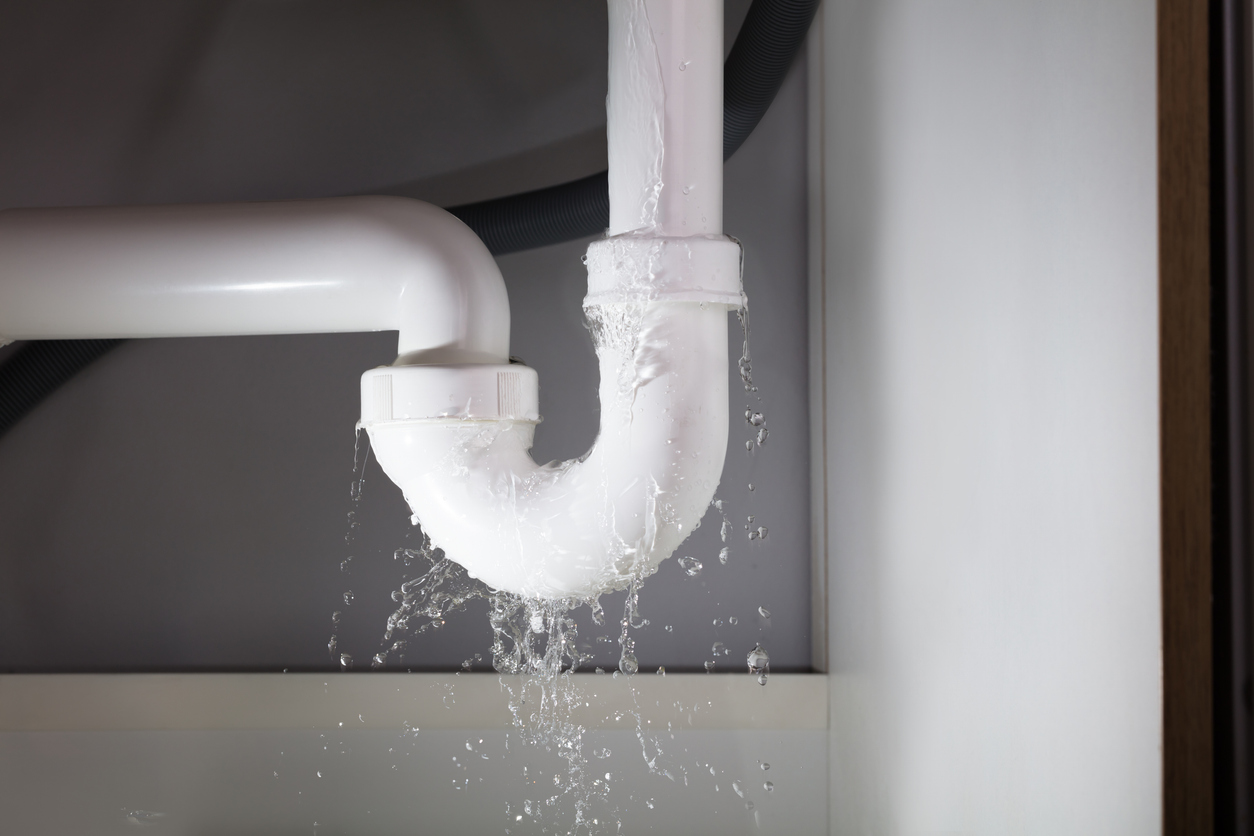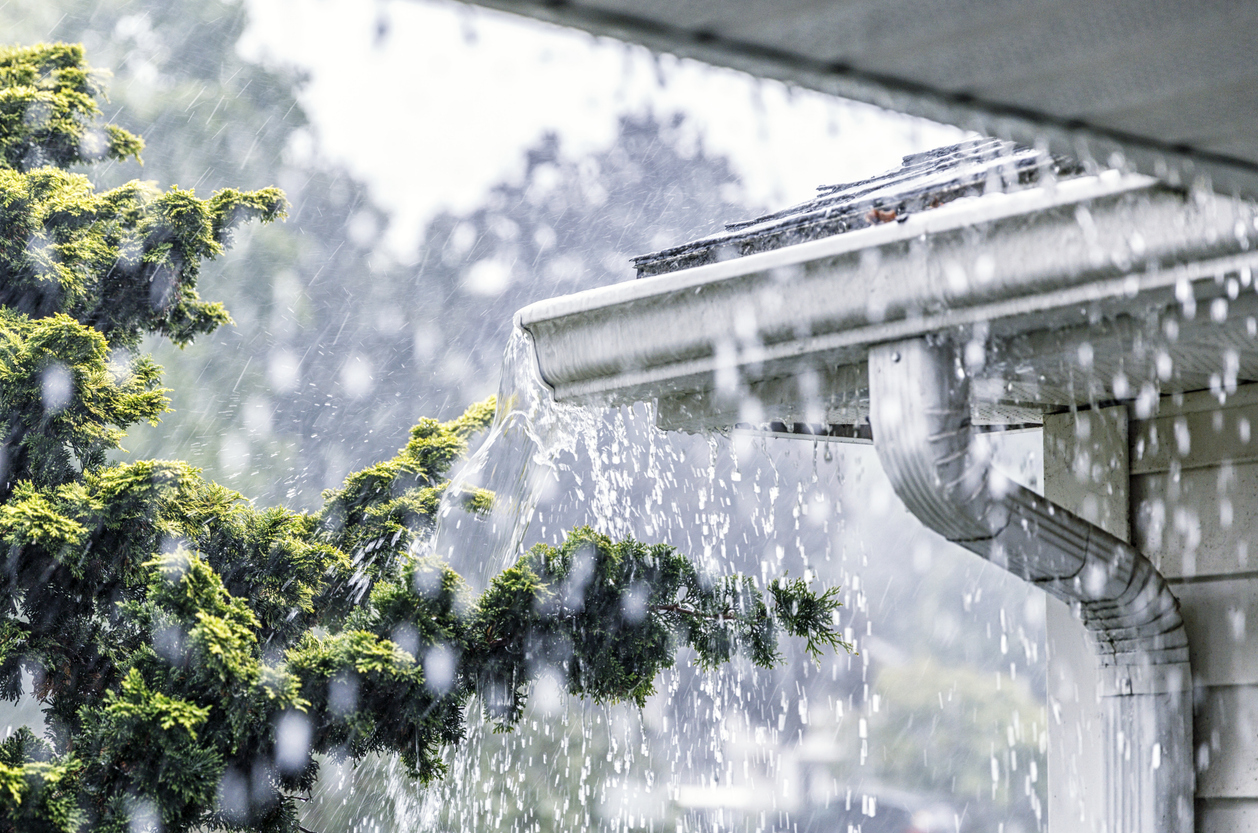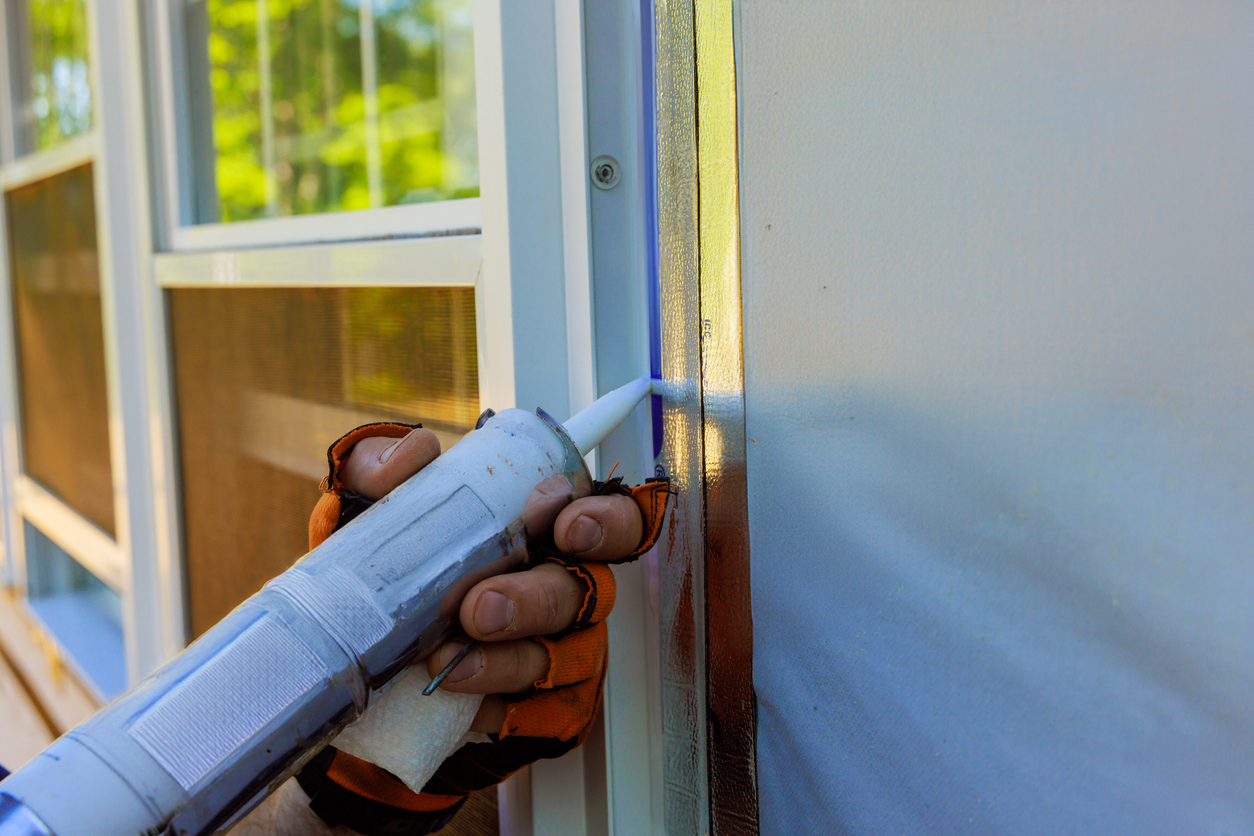Lot owners vs owners corporation or body corporate – when it comes to strata repairs, who is responsible for water damage?
Committees play an essential role in managing a property on behalf of an owners corporation or body corporate. They are often the first point of contact for lot owners and often liaise closely with strata-managing agents to provide instructions and approvals when maintenance issues or urgent repair requests arise.
In the event of strata property water damage, the best approach is to take swift action to address the issue to help maintain safety and minimise stress for everyone involved. However, determining the cause and owners corporation or body corporate repair and maintenance responsibilities can get complicated. This is because strata properties may have a complex network of water pipes, electrical wiring, air conditioning and ventilation systems hidden from sight in cavity walls, roof spaces or underfloor.
Whilst identifying the source is difficult, this challenge intensifies when water damage remains undetected for a lengthy period or spreads beyond its original location.
Identifying the origin of the problem is the first step in addressing water damage. Once the committee is alerted to the damage, knowing the boundaries between common property and individual lots is critical to understanding who is responsible for strata property water damage.
Generally, the owner is responsible for the repair if the damage is within a private lot. This refers to privately owned spaces, including all internal walls, fixtures, utilities, and equipment that service or are within the lot owner’s unit.
If the damage is on common property, the owners corporation or body corporate is typically responsible for the repairs. These are spaces outside the individual lots, such as roadways, lobby and foyer areas, lifts, staircases, car parks, gardens, fitness centres, swimming pools, etc. It may sometimes also incorporate joining walls between lots and any other area not listed as part of an individual lot on the building plan.
However, determining whether a location is within the private property (within individual lots) or the common property (shared areas) can be complex depending on the property and state laws. Below is a guide to help you figure out whether a building element is considered a lot owner or common property within your strata, owners corporation, or body corporate.
It is best to refer to the registered strata plan or by-laws to identify the boundaries that separate lots and common property. This document can usually be obtained through the strata manager or secretary. Otherwise, a copy can be bought from the Land Registry Services
Furthermore, the NSW Land Registry Services can provide assistance interpreting strata plans, although it’s not legal advice. For strata schemes that do not have common property clearly defined, the owners corporation can also adopt a common property memorandum provided by the NSW Government as a guideline by special resolution.
Deciding who should fix the damage in a strata scheme usually depends on where the damage is – in a person’s property or a shared area. However, in Queensland, there may be some differences depending on whether the body corporate is registered under a building or standard plan.
This information can also be found in the property’s records and helps show how the boundaries are set up to determine what areas are private or shared. Owners can request a copy of their community management statement and/or building unit plan with the body corporate.
Otherwise, you can ask the body corporate manager, who usually advises you on which format plan the property falls under.
In Victoria, all owners corporations have a subdivision plan registered with Land Use Victoria under the Subdivision Act 1988. This document can help outline the boundaries that fall under common property, including parts of the land, buildings and airspace that are not defined as lots, roads or reserves.
There are available resources to help interpret these property boundaries within a subdivision plan. However, it is always best practice to consult a certified, licensed surveyor for further clarity. Furthermore, a well-prepared maintenance plan that correctly identifies common property areas and assets can help owners corporation understand their responsibilities.
In the Northern Territory, land is divided into individual lots and common property through the unit plan registered with the Land Titles Office.
This information could help outline areas responsible by the owners vs common property that falls under the body corporate, including stairways, passages, driveways, swimming pool areas, communal gardens, and the car park. Searches can be done through the Northern Territory (NT) Land Titles Offices to get key details on the registered land titles.
Tasmania divides strata property into individual lots and common property under the Strata Titles Act 1988. To understand these boundaries and their associated repair responsibilities, lot owners or committee members should obtain a copy of the strata plan. This document can be acquired from the strata manager and Land Titles Office or found online on the LIST website.
Furthermore, body corporates can also create by-laws passed by ordinary resolutions that delegate owners with exclusive use and responsibilities for certain common property spaces. The common property folio of the Register will help provide information on what by-laws apply to the strata property.

Once you have determined who is responsible for the strata property water damage, the next step is to identify the source of the water damage. In most instances, you will need to engage a plumber, engineering or qualified leak detection specialist to distinguish the exact source and cause of the water leak. It is important to use qualified professionals and experts in this area to ensure an accurate diagnosis of the source of the problem.
For water damage caused by common property infrastructure failure or faults, the scheme generally facilitates and funds any investigatory work. In some instances, reimbursements can be sought for out-of-pocket specialist fees that an owner pays whilst waiting for a committee to convene and respond to their request. However, these arrangements should be agreed upon upfront and communicated clearly.
According to a 2019 study on common defects in multi-owned properties, water penetration was one of the most prevalent damages found in strata, owners corporation and body corporate properties (Johnston & Reid 2019). There are a myriad of reasons why property water damage can occur. In such complex building constructions, tracking and inspecting the cause of water damage can be challenging. Below are findings that uncover the issues to look out for.

• Drains (32%)
• Fixtures (22%)
• Stormwater (16%)
• Hot and cold water (13%)

• Roof cladding (32%)
• Gutters (20%)
• Concrete roofs (17%)
• Downpipes (10%)
• Spitters (8%)
• Sumps (6%)
• Roof penetration seals (4%)

• Balcony (28%)
• Internal wet areas (19%)
• Podium (10.5%)
• Windows and doors (8.6%)
• Caulking seals (7%)
• Planter boxes (5%)
• Paint membrane (19%)
Source: Johnston, N., & Reid, S. (2019), ‘An examination of building defects in residential multi-owned properties’. Deakin University, version 1, accessed 23 July 2024, https://www.griffith.edu.au/__data/assets/pdf_file/0030/831279/Examining-Building-Defects-Research-Report.pdf
All owners corporations and body corporates should have a comprehensive sinking/capital works plan or maintenance plan to help your strata committee stay on top of the current condition of major plant and capital equipment, when the regular servicing checks are due and when anything needs immediate repair.
The plan also specifies how much of your committee’s budget needs to be reserved for ongoing maintenance and repairs to extend the assets’ life.
Typically, duties associated with water damages and utility infrastructure depend on the number of units it services and whether the damage falls within the boundary or internal walls of the lot.
State government legislation and related regulations generally state that utility infrastructure (such as cables, wires, pipes, sewers, drains, ducts, plants and equipment that supply utility services to common property) that service multiple lots or within shared areas are considered common property for water damage. Therefore, the body corporate or owners corporation is responsible for maintaining or executing the repairs. Conversely, the owner is responsible for utility infrastructure that supplies a single lot, particularly when it is that lot’s boundary or internal wall.
However, please note that there may be differences depending on the laws within different jurisdictions and the by-laws or building rules unique to the property. Some common exceptions and key factors should be considered for each state, which you can read more about here. Below is a general list of obligations for common issues that fall on owners vs body corporate or owners corporations.
Common water damages | General repair responsibilities |
Burst or leaking water pipes between two lots. | Owners corporation or body corporate |
A leaking or burst water pipe within a lot that supplies a utility service only to that individual lot. | Lot owner |
A malfunctioning hot water system on the ground floor was piped and wired directly into a lot on the third floor. | Lot owner |
Burst pipes in a boundary wall or outside a lot (e.g., the hot water pipe bursts are in the concrete floor, floor drains or sewer pipes within common property). | Owners corporation or body corporate |
Pipe damage within internal walls. | Lot owner |
Pipe damage from a pipe that services multiple units. | Owners corporation or body corporate |
Mould that is caused by a burst or leaking pipe in a common area that seeps through a joint wall and causes mould to a surface in one or more adjoining lots. | Owners corporation or body corporate |
Mould that is caused by moisture or condensation coming from inside the lot, e.g., cooking, clothes dryer, shower. | Lot owner |
Water leaks from a bath, shower taps, or pipes under the sink. | Lot owner |
Burst pipe within an internal wall that is of exclusive use to the lot (e.g., a pipe in an internal wall feeding the shower). | Lot owner
|
Unfortunately, there is no one-size-fits-all for repairs and maintenance responsibilities, as exceptions may arise due to specific by-laws, building rules, state laws, and specific circumstances. Below is an overview of the legislation governing repairs and common examples applicable to your region.
Under the Strata Schemes Management Act 2015 (Section 106), owners corporation are responsible for handling damages within or caused by common property. However, if action has been taken against a responsible party, providing that it does not affect the safety of the building or common property they can delay repairs. If the owners corporation fails to repair the issue, an affected owner may recover damages or any losses suffered.
On the other hand, lot owners are responsible for handling any repairs within their property. This responsibility extends to removing personal items from their property when moving out. For repairs and maintenance in a rental property, any goods left behind after a rental agreement ends can be removed under the Uncollected Goods Act 1995.
To help determine who is responsible for repairs, the Strata Community Association of NSW has prepared a document called ‘A Guide to Common Property‘ outlining general obligations.
Owners | Owners corporation |
· Damages to internal walls and painting or waterproofing. · Plumbing and fixtures within internal walls and fixtures (e.g. sinks, toilets, baths, and showers). · Water damage from factors originating in your property. | · Boundary walls, roof, and gutters. · Plumbing in boundary walls and under the floor. · Water damage coming from common property. |
Example A balcony with waterproofing problems may be causing significant issues. However, it’s not severe enough to risk the building’s collapse, destruction, or to render it uninhibitable. Situations such as this example often meant the issue wasn’t considered a major defect, and owners were stuck with the cost of fixing the problem. Now, however, state courts are trying to change that. |
Under the Building Units and Group Titles Act (1980) (BUGT Act) and Body Corporate and Community Management Act 1997 (BCCM Act), generally the body corporate is responsible for the repairs and maintenance of common property, while the lot owner is accountable for their lot. Although it seems simple enough, these obligations are further determined by format plan, which comes in two types:
Usually, for building format plans, it’s the body corporate’s responsibility to maintain elements such as railings, parapets and fences on the common property boundaries. This includes fittings and structures that protect more than one lot, such as foundation, roofing, doors, windows, and supporting or foundational frameworks.
However, under a standard format plan where buildings have common walls, the owners sharing a common wall are jointly responsible for any maintenance issues relating to it. The body corporate has no maintenance responsibility because no common property is involved.
Water defect | Who is responsible for repair in a building format plan and building units plan |
Water pipes or cables within a boundary structure. | Body corporate |
Utility infrastructure (like equipment, pipes and wiring) within an internal wall and service the one lot. | Lot owner |
Flooding or water damage to the outside of the building, including doors, windows and fittings, and balcony railings. | Body corporate |
Water damage to building foundation such as roof, waterproofing membranes or load-bearing walls. | Body corporate |
Flooding or water damage to common property roads, gardens, and facilities. | Body corporate |
The inside of the lot, including all fixtures and fittings inside the lot such as doors and windows. | Lot owner |
Any fixtures or fittings that were installed by the owner for their benefit. | Lot owner |
Exclusive use areas the owner has the benefit of (unless the exclusive use by-law says otherwise). | Lot owner |
Water defect | Who is responsible for repair in a standard format plan and group titles plan |
Water pipes or cables servicing more than one lot. | Body corporate |
Utility infrastructure (like equipment, pipes and wiring) that is inside the boundaries of the lot and only services that lot. | Lot owner |
Guttering and downpipes that service more than one lot. | Body corporate |
Guttering and associated downpipes above the lot. | Lot owner |
Flooding or water damage to common property roads, gardens, and facilities. | Body corporate |
Flooding or water damage to the roof, painting, exterior walls, doors, windows, lawns or gardens within a lot boundary. | Lot owner |
Any fixtures or fittings that the occupier installed for their benefit.
| Lot owner |
Exclusive use areas, if applicable, unless the exclusive use by-law says otherwise. | Lot owner |
Under the Owners Corporations Act 2006, the owners corporation must manage, administer, repair and maintain the common property and related services, chattels, fixates, and fittings. This also includes raising fees for maintenance, insurance and running costs such as utilities. Liability insurance must cover common property to help minimise unnecessary legal risks to the owners corporation.
Generally, for water damage from an individual unit, the owner has a statutory duty under section 129 of the Owners Corporations Act 2006 to repair any utility infrastructure that services their lot. Failure to uphold this obligation could result in a written order being issued to the owners for repairs. If the request is not completed within 28 days, the owners corporation can proceed with remediation work without approval, with the costs incurred to the owner.
Furthermore, Consumers Affairs Victoria outlines that landlords must immediately take action for any urgent repairs and maintenance in a rental property that make the property unsafe or difficult to live in. These may include
An essential service or appliance not working (e.g. hot and cold water, heating, or laundering).
The Victorian Civil and Administrative Tribunal (VCAT) can assist with handling water-related disputes. If you’re dealing with an unreasonable flow of water onto your property, or someone is interfering with the reasonable flow of water onto your property, which has resulted in loss or damage. This application can either claim compensation or request an order demanding the other person to take action to stop the unreasonable flow of water or interference.
Example: A truck hit a fire sprinkler in an apartment complex car park. The collision set off all the sprinklers in the car park, causing severe water damage to the contents inside the storage cages. Unfortunately, many residents were not insured for damage to their contents under the misguided belief that owners corporation insurance covered it. An owner took legal action against an owners corporation for damage to the owner’s property caused by water penetration via a balcony (a common occurrence). The court concluded that the balcony was common property and had not been adequately maintained. Therefore, the lot owner had a cause of action in negligence against the owners corporation for damage to her lot. |
The Unit Titles Act 1975 (NT) and the Unit Title Schemes Act 2009 (NT) are key legislative frameworks outlining the body corporate’s duty to repair common property and owners’ responsibility for their lot.
The costs can be distributed to all owners if the service or facility is shared. These may include items such as:
On the flip side, lot owners are obligated to reasonably maintain and repair their units – particularly if they have tenants. Once a landlord has been notified of damages requiring urgent repairs, they have five days to complete the repairs or 14 days to schedule rectification work. For further information about landlord repair responsibilities, please visit this factsheet: https://consumeraffairs.nt.gov.au/__data/assets/pdf_file/0006/668148/repairs-factsheet.pdf
Damage caused to the common property or expenses incurred by the body corporate due to owners or their tenant’s actions should be passed onto the party responsible wherever possible. In the Northern Territory, the body corporate manager has no authority to collect the damage costs caused by a renter without legal action, which in most cases is impractical. In these scenarios, it is beneficial for the body corporate to adopt a resolution that agrees to hold owners responsible for any damage or costs to the body corporate for common property due to owners’ actions or the actions of their tenants.
The Strata Community Association of the NT has prepared a set of to help owners and committees determine who is responsible for allocating costs to the various parties. There will be times when disputes occur between owners in a body corporate. In this situation, the Northern Territory Civil and Administrative Tribunal (NTCAT) can help mediate between parties disputing access to the repairs.
Example: An owner reported a water leak problem in their unit. Further investigation revealed that it was necessary to access the unit above to identify the cause and undertake repairs. However, despite notifying the unit owner above, access was denied due to various reasons provided by the owner. North Management attempted to meet the requirements supplied by the owner of the unit above, but unfortunately, access to it was not granted for the necessary work. Due to the urgency of the repairs, an emergency NTCAT order was filed on Thursday, seeking assistance in obtaining access to carry out the remedial work. This move aimed to prevent further damage to the unit or the body corporate. A hearing was held on Friday, resulting in access being granted for the weekend as needed by the owner of the affected unit. The NTCAT stated that additional hearings could be arranged if either party had more concerns. |
Under the Strata Titles Act 1998 (Part 6 Divison 5), body corporates are responsible for maintaining and repairing all areas within a strata property that is not within a lot on behalf of all owners. This includes any service infrastructure that supplies utilities to a lot or common property, such as pipes, sewers, drains, and ducts. To fulfil this duty, body corporates hold the right to access a lot to maintain, repair, or replace the common property. Although reasonable notice should be provided to the occupier, immediate access is allowed in emergencies.
Unless specified differently in the by-laws, owners who have exclusive use of a lot are responsible for its upkeep and any necessary repairs as directed by the body corporate or a public authority. This obligation extends to repairs and maintenance in rental properties, where landlords must address water damages that cause disruptions to essential services quickly. When the owner is unreachable within 24 hours, the tenant is permitted to arrange for a nominated repairer to perform the necessary work. As per the Consumer, Building and Occupational Services, these can include:
When things go wrong, your strata manager can help determine what is and isn’t common property, and if it is, they can arrange to have a qualified contractor visit your building as quickly as possible.
One of the most important roles of a strata manager is to coordinate repairs and maintenance. When things go wrong, your strata manager can arrange to have a qualified contractor visit your building as quickly as possible. They’ll also arrange routine repairs and maintenance for common property to help keep your building safe and in peak condition.
For larger, more extensive events, the strata manager also plays an important role in acting as a conduit of information between contracts and the strata committee, which will review and approve larger-scale repairs.


Before renewing your agreement, take a moment to compare your options. Our quick and easy form can be completed in less than 30 seconds.
Building damage caused by water is often claimable under strata insurance, even when the source of the leak is an owner responsibility to repair.
Keeping good records of any investigation or repair works is important, as most insurers will only consider a claim for the resultant damage after the cause has been rectified.
In the case of severe damage or complex claims, insurers may appoint an assessor – if you think this may apply to your circumstances, it’s best to notify us or your insurer as soon as possible.
Depending on the strata insurance policy, coverage may vary. For our branches listed below, customers can request a copy of their common property insurance policy here or report property damages for potential claims here.

You can only claim special benefits for lost rental income or relocation expenses of owner-occupied units with temporary accommodation if an active claim is due to damages from an insurable event that has made the property unhabitable.

The insurance held by your owners corporation or body corporate does not cover the lot owner, tenant or visitor's belongings, including cars. Instead, claims for damages to personal items should be made to your own policy.
When it comes to managing a strata property, there are various compliance or legislative requirements that are needed to protect owners and residents. When the situation allows, you don’t want to miss out on the chance of an insurance claim. Click here to learn more about Community Health & Safety and related services to ensure your protection. You can also click here to download our FREE Community Living guide series on defects. If you would like to learn more about the services we offer, click here for a free assessment.
This article is edited by Lauren Shaw Regional General Manager and Licensee-in-Charge on August 2024.